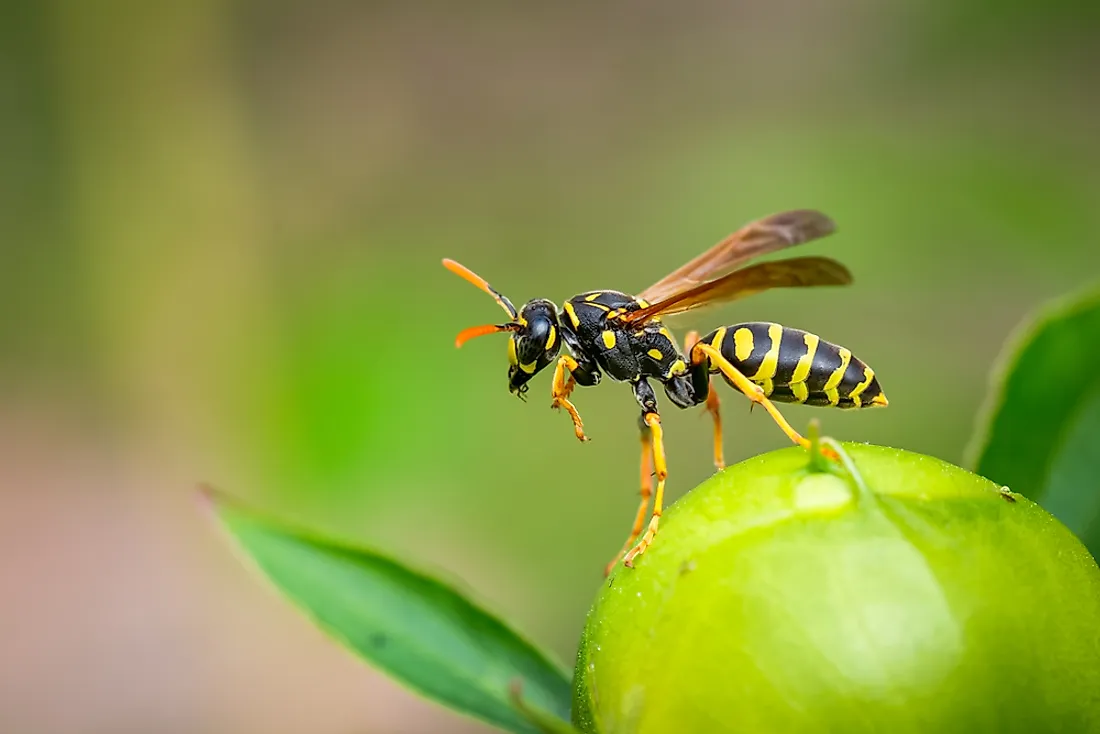What Is The Difference Between Bees, Wasps, and Hornets?

Numerous bees, wasps, and hornets species look alike and without the right information determining the difference can be challenging. The majority of these insects are black and yellow, and they live in a colony of over a hundred members. These insects are known to attack if provoked, and their stings can be detrimental especially to individuals allergic to insect stings. Hornets are a type of wasp, and together with bees they belong to the order Hymenoptera, and suborder Apocrita.
Bees
Bees are the fuzzy flying insects which are famous for the role they play in pollination. There are over twenty thousand bee species which are found on all the continents on earth except Antarctica. Some species like the stingless bees and bumblebees are social creatures which live in colonies. Bees are hairier than both wasps and hornets.
Wasps
Wasps belong to the Vespidae family which includes hornets and yellowjackets. Just like bees, wasps are eusocial creatures which live in a nest with non-reproductive workers and an egg-laying queen. They are not furry like bees and have four wings. Only female wasps have stingers which they use to sting repeatedly.
Hornets
Hornets are the biggest eusocial wasps which resemble yellowjackets. The main difference between the hornets and other wasps is their rounded abdomen segment right behind their waist and the huge top margin of the hornet’s head. They are social wasps which build their nests in trees and shrubs. Their nests are made up of the egg-laying queen, workers and the adult males whose primary purpose is fertilizing the queen.
Differences Between Bees, Hornets, and Wasps
Feeding
The main difference between bees, hornets, and wasps is the food they give their young ones. Even though adult hornets and wasps feed on nectar, they spend most of their time looking for food for their carnivorous young ones which feed on smaller insects or spiders. Bees are generally vegetarians who give their young ones nectar.
Nest Structures
These insects use a wide variety of materials when building their nests. The bees make some roundish wax cells over or underground. Undomesticated honeybees usually nest in cave cavities or tree trunks. Hornets and some wasp species construct their nests using wood shavings while some wasps use mud. Hornets build huge enclosed nests on shrubs and trees while the nests of wasps are usually open and suspended from a solid substance in protected regions like a covered porch.
Aggressiveness
Only the female wasps and bees have stingers. The male insects lack the ovipositor which is usually modified into a stinger. Unlike the bees, the wasps and hornets don’t die after stinging a human or an animal, because their stingers are not pulled out or barbed. The bee stingers are attached to their skin, and they can only sting once while the hornets and wasps sting repeatedly. Hornets and wasps are aggressive insects which can attack and even chase people when threatened while bees are less aggressive and only sting when cornered and when left alone they don’t attack.
Colony Size
Another way to differentiate between the bees, wasps, and hornets is by the size of their colonies. Hornets and bees have bigger colonies with hundreds of members and a queen. The colony of a wasp is smaller with less than a hundred members.











